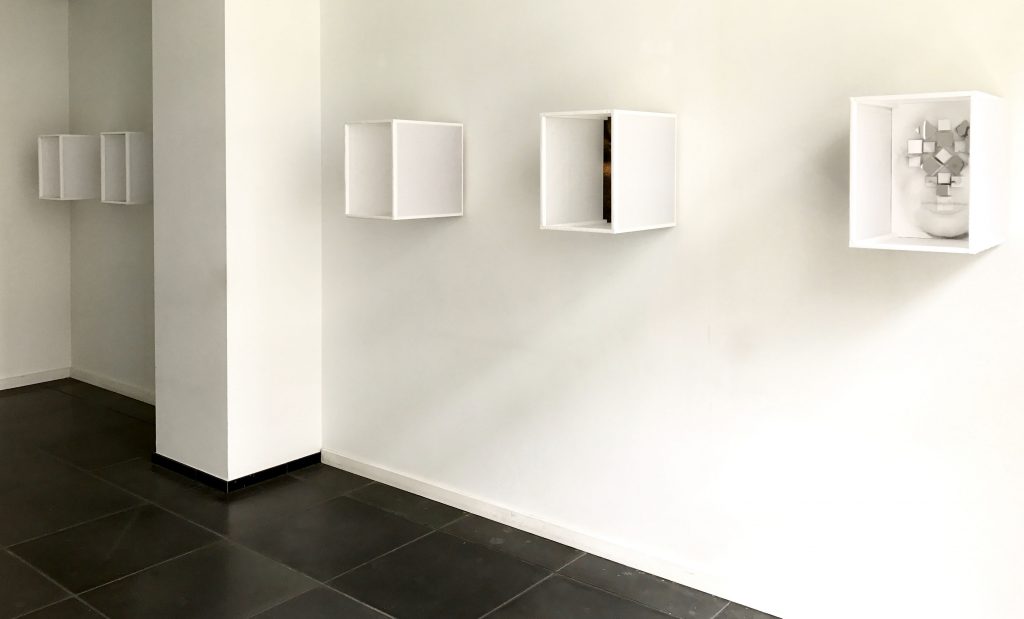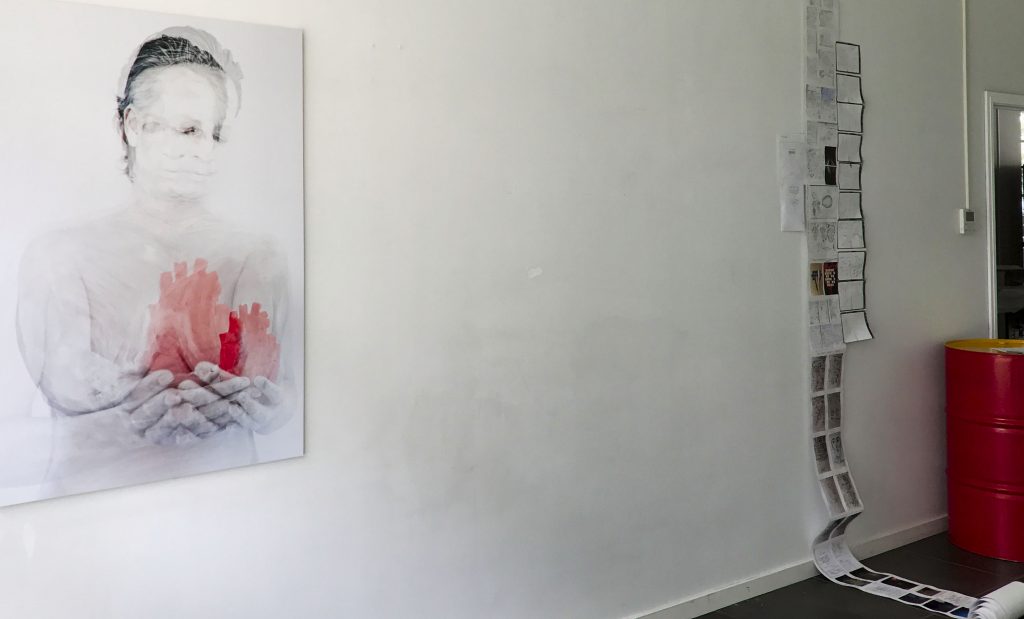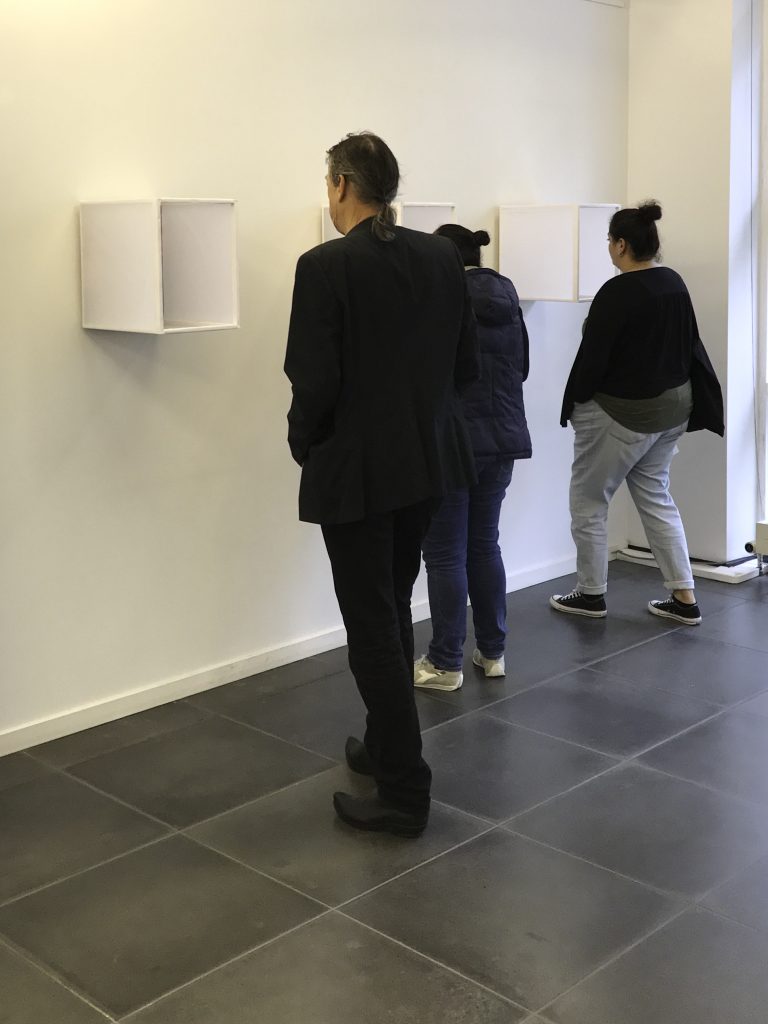Me, my Self and you is an installation that visualises the search for the Self. Do we even have one?
The viewing boxes represent the inner ‘me’ of the artist. Every box shows one particular subject, that is directly related to the artist. There are mirrors, seemingly placed at random inside the boxes. The cut-outs that vary in height, neatly visualise the artist’s confusion.
At this moment in time, the artist believes she needs ‘the other’ to even know she exists. The small mirrors inside the viewing boxes confronts the viewer with her/his own portrait, blending with the photographic art pieces inside the viewing boxes. I
“I have the weird idea that I don’t exist at all. My Self is a fantasy. It’s merely something my brain has created so it can have a less boring existence. Did I say ,my brain’? It isn’t mine, but it needs diversity and wants to be anything but bored. So it has created this magnificent falls feeling of self. Because I think I exist and make my own choices, I move around and have a lot of different experiences. Not because I choose to do so, but because my brain demands it from me. *laughs* Yeah there you have it. I am still utterly confused. *laughs* . This project isn’t finished yet.” – Puk, Antwerp 2017



It’s an art installation that covers two opposing walls; five viewing boxes on one wall and one large self-portrait on the other.
It all started with this one question: How do I know my Self isn’t someone else’s Self?
The artist’s confusion is not only about if we have a self. If we have a self, where is it located? The only conviction that is clear, is that other people let us experience we exist. However this doesn’t necessarily proof that the self exists. The viewing boxes visualise these two thoughts and emotions. Squares of 4×4 cm and 3×3 cm are cut out of the photographs inside the viewing boxes. Cubes of the same size, but alternating in height have been placed onto the cut outs. On some of the cubes, the cut outs have been put back, on others small mirrors were placed. The photograph is no longer flat and confuses the viewer on how to look at it. This portrays the artist’s confusion. The small mirrors confront the viewer with parts of her/himself but also stand for interaction, Puk’s convinced that we need the other person to confirm our own existence.
Still no clear answer
Since the artist hasn’t found out if we have a Self and where it could be located, she chose to define herself using five images. The viewing boxes are symbolic to her inner world, that is somewhat transparent. The transparency is possible due to the use of a white, thin parachute fabric. This provides the viewing box with defused light, even when the viewer put her/his head inside the viewing box. The artist has chosen to visualise her inner world because the search for the Self is intrinsically.
The five subjects
- my eye, so called mirror to the soul; do you see my soul?
- my neurons, I suspect a large part (if not all) of my Self is located somewhere inside my brain
- my anger, I can’t stand injustice and I suspect this is due to my upbringing
- the octopus, I have special relationship with this animal
- my meditative side, I consciously choose to nourish my longing for peace, quietness and solitude
The only thing Puk does know, is that she is sincerely herself at this moment. Because showing yourself is an action going outward, it can not be portrayed inside a box. The iconographic drawings by Cesare Ripa, the icon ‘sincerity’ inspired Puk to create this self-portrait, where she is offering her heart.
She has chosen to use white body paint to show that she’s constantly changing, on all kinds of levels and to give the photograph a vulnerable look and feel, since exposing your Self makes you vulnerable in a sense. The reason she used double exposure is because of a certain duality: on one hand Puk loves and cherishes herself, her heart. On the other hand she wants to share/show herself to the world, with a watchful eye.
